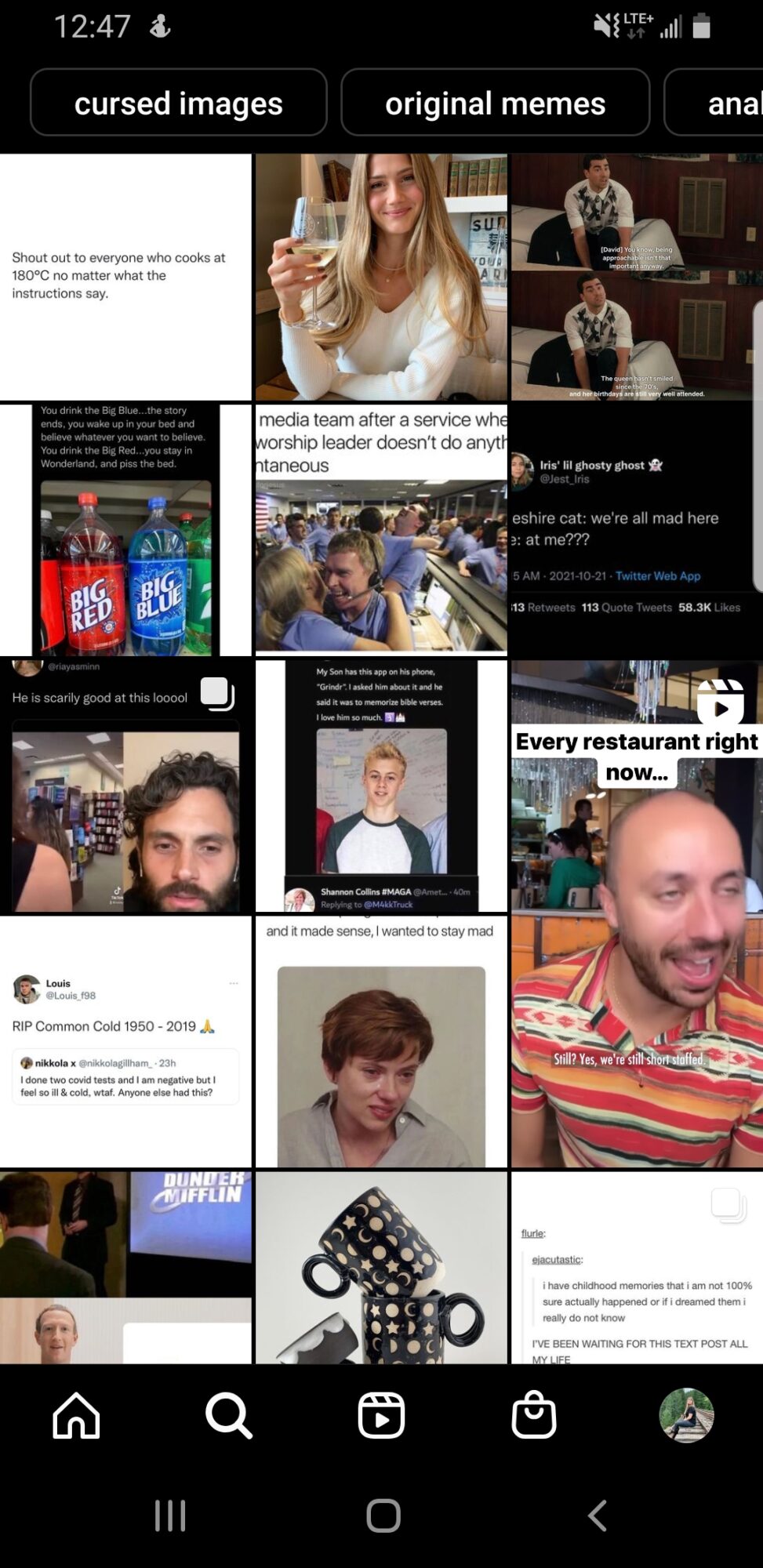Image Attribution: “Assignment 3 Part A; Kelsey Schuurman” by Instagram is licensed under CC BY-NC-SA. (See interactive map)
The two social media platforms I use the most are Instagram and Snapchat. Both Instagram and Snapchat are very different platforms, with some overlap. Instagram is made more for entertainment, with personal communication as a side perk. Whereas Snapchat is made with communication being the priority, and entertainment as a side perk. Instagram specifically caters to what you like and view the most, therefore what I view, is not necessarily what another person will view. Each person’s SNS’s will cater more to their personal needs, in order to maximize the time usage of the app. They do this in the form of a social media algorithm. “Without social media algorithms, sifting through all of this content on an account-by-account basis would be impossible. Especially for users following hundreds or thousands of accounts on a network, so algorithms do the legwork of delivering what you want and weeding out content that’s deemed irrelevant or low-quality.” (Barnhart, 2021).
I kept track of my usage for both Instagram and Snapchat for a total of three days, and found on average I spent roughly 1.5hrs on both platforms. This totals up to a total of 3 hours everyday spent on only two SNS’s that I am a part of. During these three days I also did not create or alter any media, but I did consume and share various photos and videos to friends and family.
The main positive feature of Instagram is the ease of use for sharing high quality images. The way it presents itself with focusing on images rather than text, helps stimulate the brain visually and makes the viewer feel more attached. By readily showing someone “this is the coffee I had today,” it makes people feel like they are also a part of your story (when in reality, there is a very good chance you are but a very small, possibly undetectable part of it). Instagram is also known for creating unrealistic expectations of what life truly looks like. “So many people tend to create a fake life, which they share on Instagram to get famous. This need for validation and fame is highly toxic, and teenagers are the ones most affected by it.” (Tech Untold, 2021).
Though someone may take a picture of the aesthetic coffee they have, the truth behind that photo may be an extremely loud, abrasive environment, or possibly an eating disorder where this coffee is their only “meal”. Instagram sets subconscious expectations for us because it literally shows us exactly what the “ideal” life is supposed to look like. It is incredibly difficult to distinguish between reality, and the “insta-reality.”
The second app I use the most is Snapchat. This is used for everyday communication between my friends and myself. Sending various photos or texts throughout the day to keep in touch. I really enjoy the ease of use with snapchat with how accessible it is for sending photos, videos, texts as well as doing facetime calls. This has been especially important to me with my best friend who lives a province away. Everyday I get to see her, and her young daughter, while still being far away. It allows us space to still have meaningful conversation (with the videos we send, as well as facetime), while still actively participating in our busy lives. With the pandemic, as natural distance, staying in contact over SNS’s has been a necessity. One thing that I don’t enjoy about snapchat is the low quality images and videos. If I capture an important moment on snapchat, it lowers the quality greatly making it one of my last camera choices.
“During a survey conducted in April and May in 2020, 41 percent of U.S. respondents reported to have communicated more through text messages after the COVID-19 outbreak compared to prior to it. In addition, 35 percent were using more voice calls and 33 percent were using more social media.” (Statista, 2021). My behavior towards social media has changed in the last year, and made me more dependent on it for connection. I noticed that I used both Instagram and Snapchat much more than I had before, using both to help connect myself with others and express myself more. I found in the last year that I specifically took my Instagram page more seriously by looking for places of beauty to take photos [of]. Previously, I felt that creating content was a bit lame and pathetic, but I now see it as a means to express myself creatively. In accordance with the survey, my friends, and my own personal experience, the pandemic only increased the dependence we already had on social media platforms.
References
Barnhart, Brent. “Everything you need to know about social media algorithms.” Sprout Social, 26 March 2021, https://sproutsocial.com/insights/social-media-algorithms/. Accessed October 2021.
Thapliyal, Akshay. “All The Pros And Cons Of Instagram You Should Know.” Tech Untold, 2 July 2021, https://www.techuntold.com/instagram-pros-cons/. Accessed October 2021.
Statista Research Department. “Social media use during COVID-19 worldwide – statistics & facts.” Statista, 19 May 2021, https://www.statista.com/topics/7863/social-media-use-during-coronavirus-covid-19-worldwide/#dossierKeyfigures. Accessed October 2021.
